David Stairs
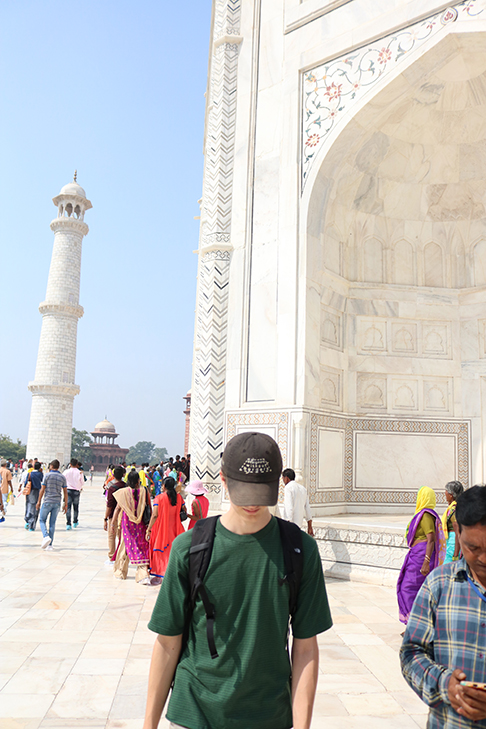
There’s a little place in the Indian city of Agra famous as a testament of a man’s love for a woman.
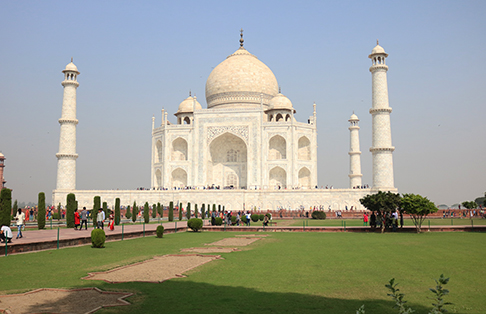
The world’s most famous burial site
Constructed between 1632 and 1654, the Taj Mahal, burial place of Shah Jahan’s favorite wife, is not only the most famous example of Mughal architecture, but the universal symbol of India to much of the world.

North Gate entry to the Taj gardens
By every account Mumtaz Mahal was an exceptional woman. Born Arjumand Banu Begum in 1593, “the Exalted One of the Palace” was betrothed to the young prince Prince Khurram, later known by his regal name Shah Jahan, in 1607 when only 13 years old. A woman of culture and refinement, Mumtaz was the daughter of a Persian noble in the service of the Mughul court.
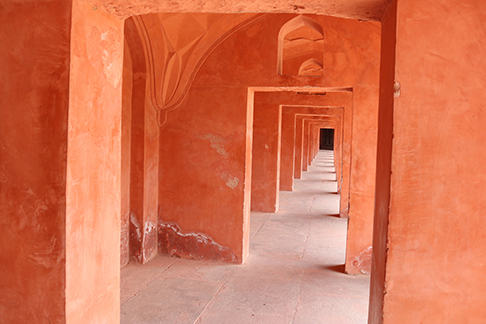
Sandstone rooms for former visitors, workers, and guests surround the outside entrances
After her formal marriage at 19, Mumtaz became Jahan’s second and preferred wife, destined to bear him 14 children. It was during the birth of the last of these, while accompanying her husband on a military campaign in 1631, that Mumtaz died age 38. Her husband was so unhinged by her death that he went into seclusion for a year. At the end of his mourning he emerged visibly older, coaxed to return to the world by his 21 year-old daughter, Jahanara Begum, who assumed many of her mother’s formal duties.
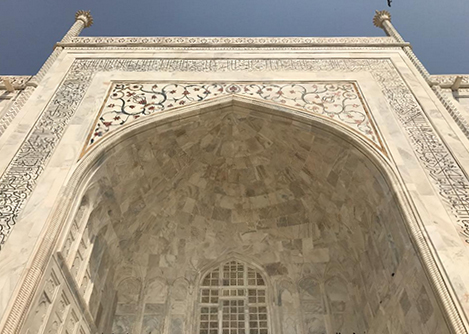
The entry arch to Mumtaz’ crypt is precisely 22 steps above the garden. Calligraphic inscriptions from the Quran, larger at top to correct for distortion, run around the entryway
Shah Jahan commissioned Ustad Ahmad Lahauri to design a fitting memorial to his wife in 1632. Reportedly requiring the labor of more than 20,000 workers, the Taj Mahal departed from the Mughal style of using sandstone in favor of white marble. A special technique, pietra dura, the process of inlaying semiprecious stones— Agate, Lapis, Mother of Pearl, Onyx, Tourquoise etc., in white, translucent marble was used throughout the construction of the Taj Mahal, and is an art form still practiced in Agra today. Exquisite geometric patterning accompanied marble bas-relief floral patterns in keeping with the Muslim proscription on using images.
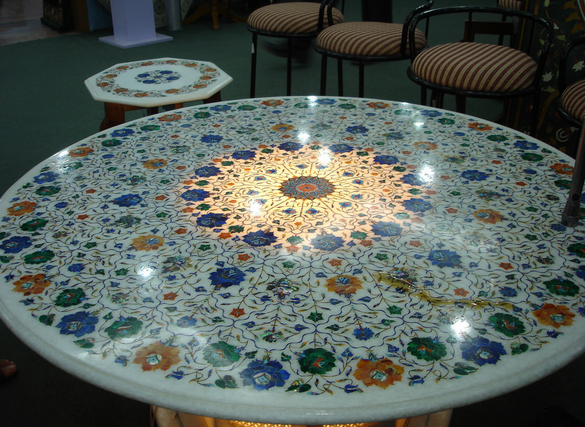
Pietra dura translucent tabletop
Located on the banks of the Yamuna River, surrounded by extensive formal gardens and reflecting pools, the most notable design element of the structure is not its materials, but its obsessive geometric symmetry.
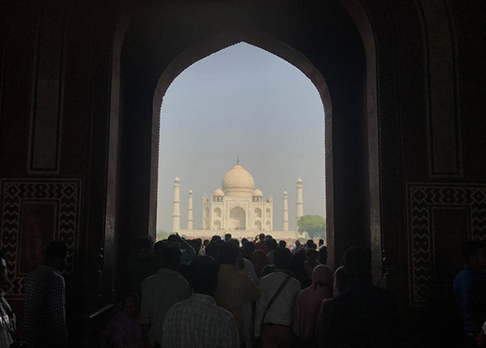
Perfect alignment of Taj Mahal with its entry gate
One enters the grounds through gates from any of the four cardinal points. At a center point of the four entryways one catches a first glimpse of the Taj itself through the arch of the North Gate. Here one’s line of sight leads to Mumtaz’s burial chamber, her cenotaph centered directly under its famous “onion dome.” All surrounding buildings, gardens, and minarets are precisely symmetrically mirrored on the Taj.

Gardens are maintained year round
Shah Jahan was reportedly very involved in the mausoleum’s construction, meeting daily with his architects and making frequent and enlightened design suggestions. So complete was his obsession with symmetry that the Mahtab Bagh, or Moonlight Garden, sometimes misrepresented as an intended Black Taj, was constructed directly across the river to enhance viewing of the Taj Mahal at night.
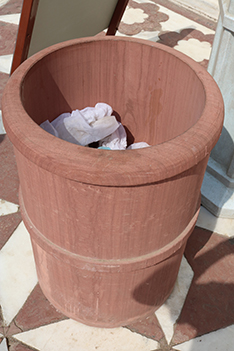

Even the waste bins are carved from sandstone and marble
Shortly after its completion, Jahan was deposed by his son, Aurangzeb, the last Mughal emperor, who had murdered all his brothers, and imprisoned his father for the last eight years of his life in the Agra Red Fort.
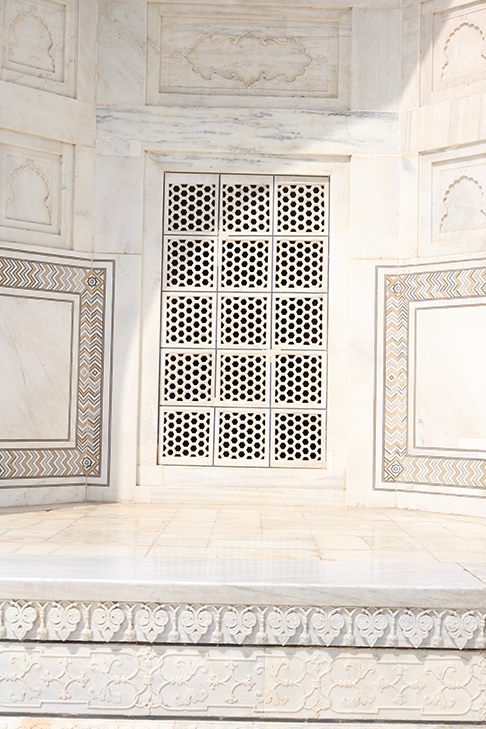
Light enters the crypt through exquisitely carved marble screens
Buried beside Mumtaz and to the west of her cenotaph by Aurangzeb, the only asymmetrical aspect of the entire complex is the location of Jahan’s tomb, a design detail that probably would have driven him to distraction. But it’s not an issue for the nearly eight million people who visit the site every year. I was fortunate enough to visit in the off-season, when the daily visitor totals can be as reasonable as 10-15,000.
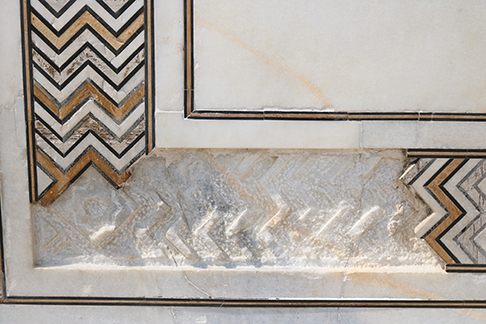
Maintenance of damaged or vandalized inlaid surfaces is ongoing
In the 1990s new efforts were made to preserve the Taj, after it was declared a World Heritage Site in 1983. Entry fees were increased from 10 rupees to 1000 in order to underwrite the cost of bottled water and slippers for visitors, the stone pathways being too hot for bare feet during summer months. The Government of India has also established a 4000 square-mile pollution-free zone around the site, the better to protect it from the yellowing effects of acid rain.
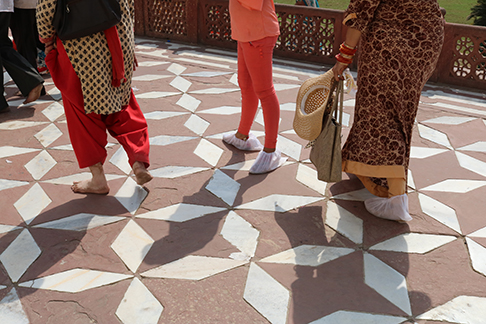
Feet both slippered and bare on the patterned walkways outside the Taj
David Stairs is the founding editor of the Design-Altruism-Project










